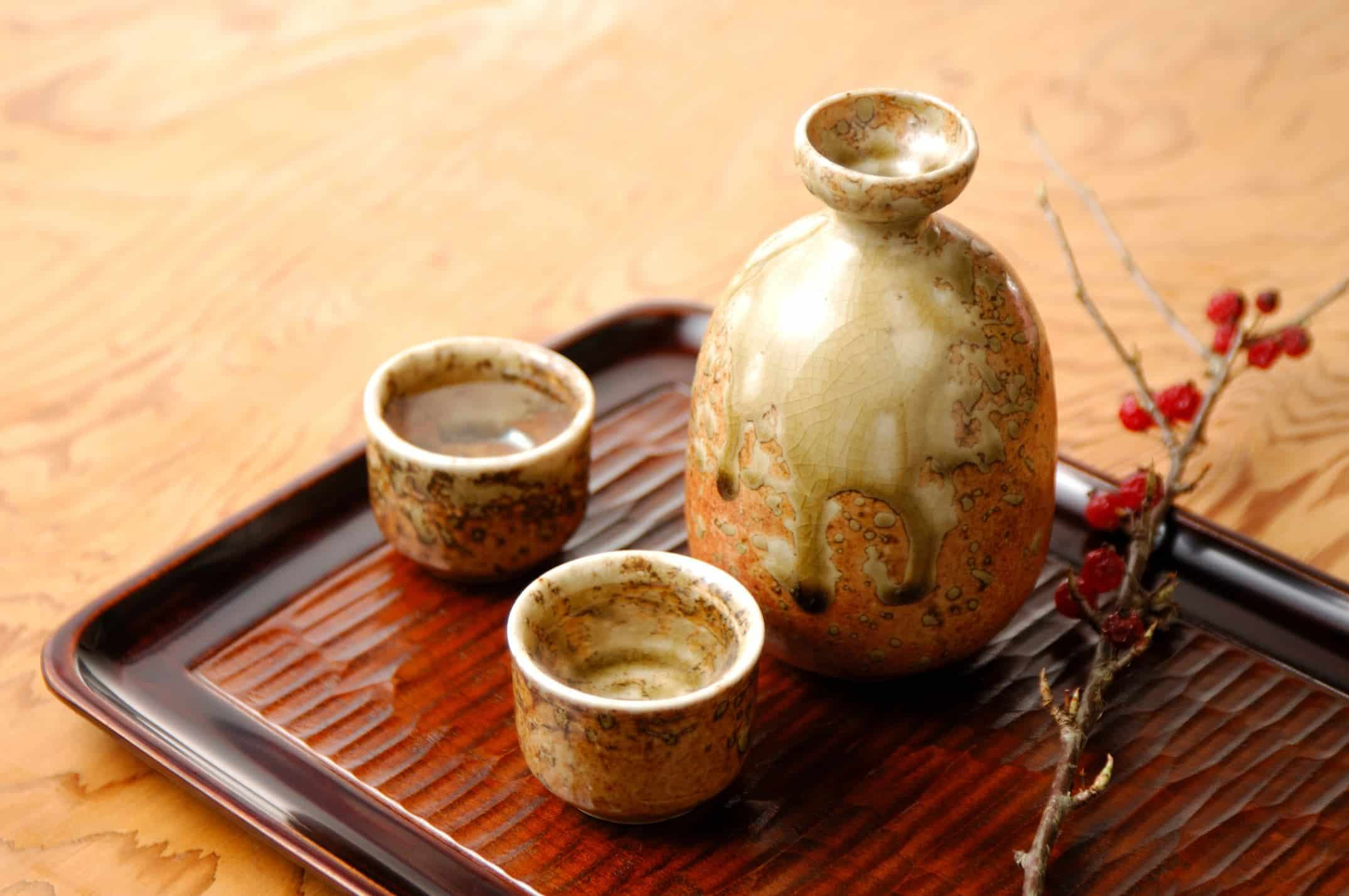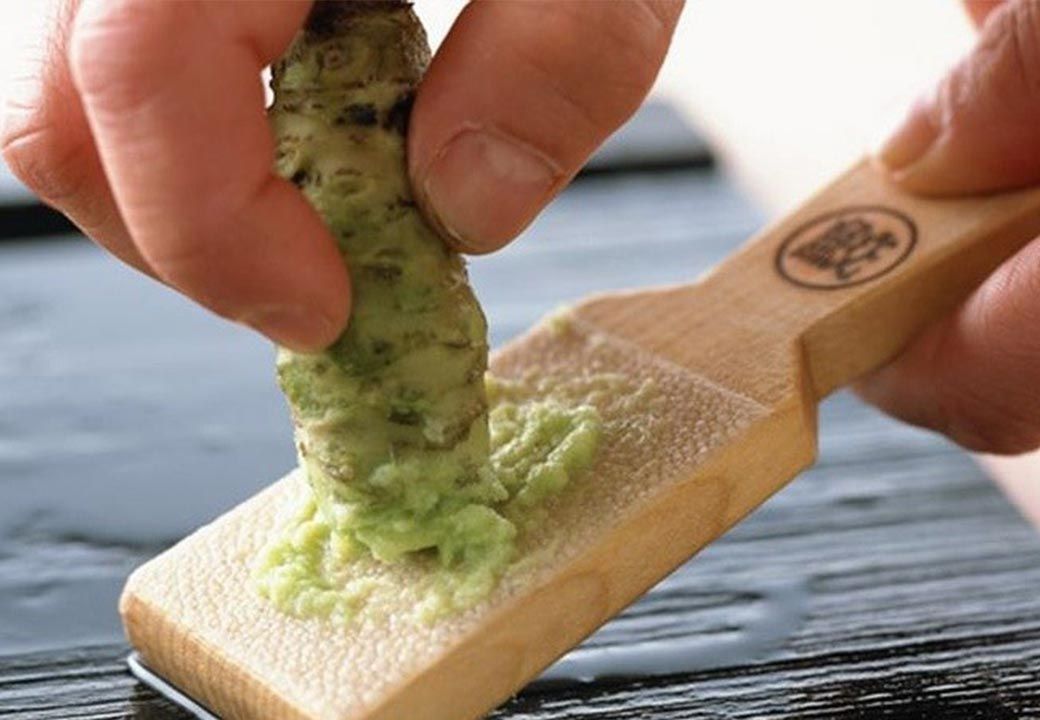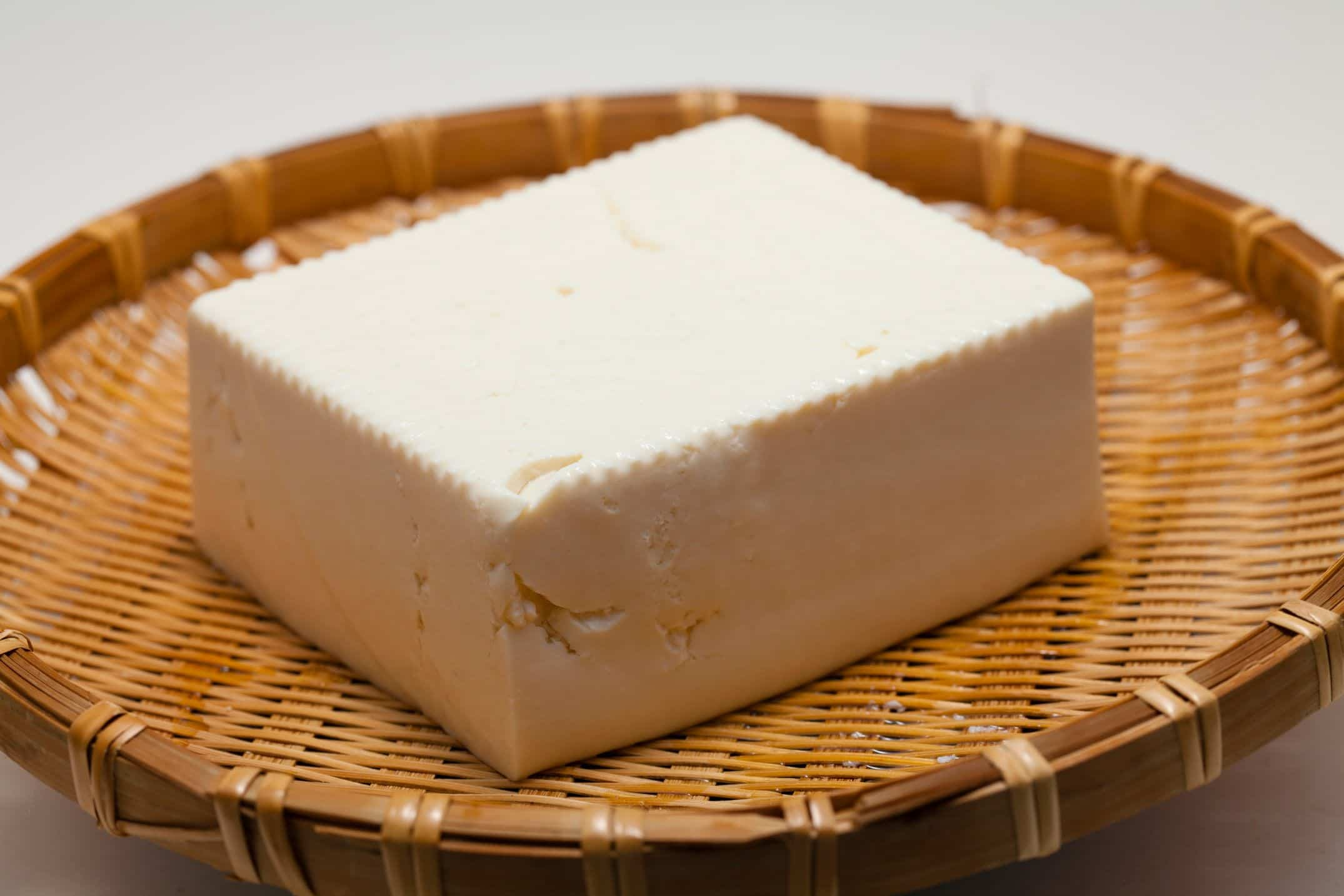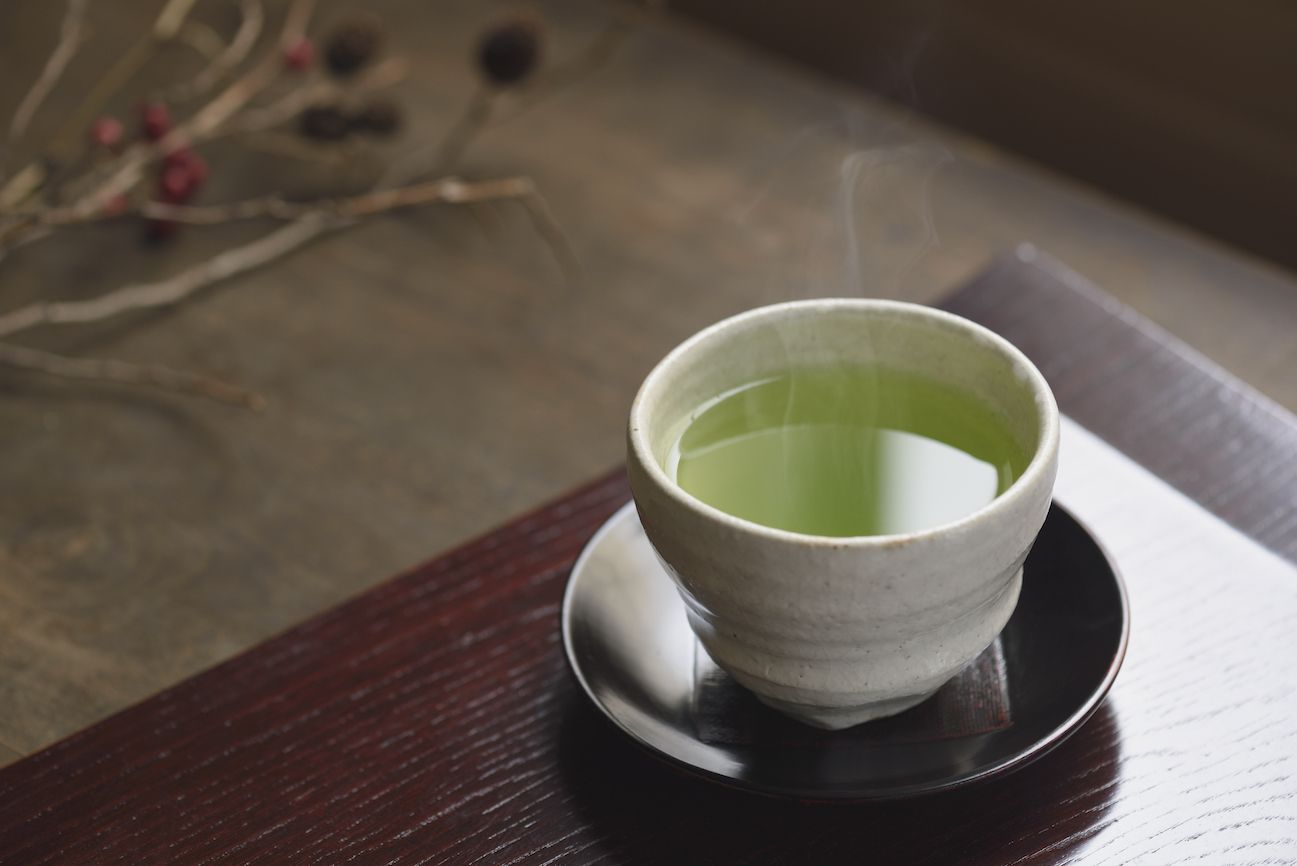
The charm of Japanese tea: enjoying the culture passed down and its wide range of uses
Japanese tea poured from a teapot has healed the minds of people over the ages, and gives the sense of taking time for a pause. Japanese tea is draped in a faint bitterness that refreshes the mouth, a smooth sweetness, a roasted aroma, as well as a refined, harmonious aroma. During its long 1,200-year history it has spread diversely too, and today it draws attention for its health components, and is loved in many countries around the world. The world of tea is also important as a traditional culture stylizing the heart of hospitality, and as such, has a profound depth.
Tea was discovered around 5,000 years ago in ancient China. Tea is said to have first entered Japan in the early Heian Period, brought over with the arrival of Buddhism. As the expression “O-cha o ippuku” (a dose of tea) that still remains today suggests, at that time it was not a drink, but an antidote used as a herbal medicine, which was only available to a few such as Buddhist priests and the aristocracy.
By the era when warriors had grasped power, tea spread among them as a luxury item, and the “tea ceremony” was created by Sen no Rikyu and others, and became complete as a unique culture. During the Edo Period, tea was used in a formal capacity in rituals, etc., with warriors and the “tea ceremony” forging an inseparable relationship.
Around that time, through production methods unique to Japan, green tea (Sencha) was born, not just for the privileged classes, but which would spread widely throughout society. Green tea is said to have amazed citizens with its fresh green color and sweet flavor, which were not to be found in the tea hitherto that used Chinese-style production methods. However, it was not until the Taisho and early Showa Periods - the modern era - that we see the spread of green tea and the teapot in the homes of the general populace. While the way of the tea ceremony is passed down as a highly formalized traditional culture of hospitality, the ways of drinking tea in everyday life are also showing rich diversity.
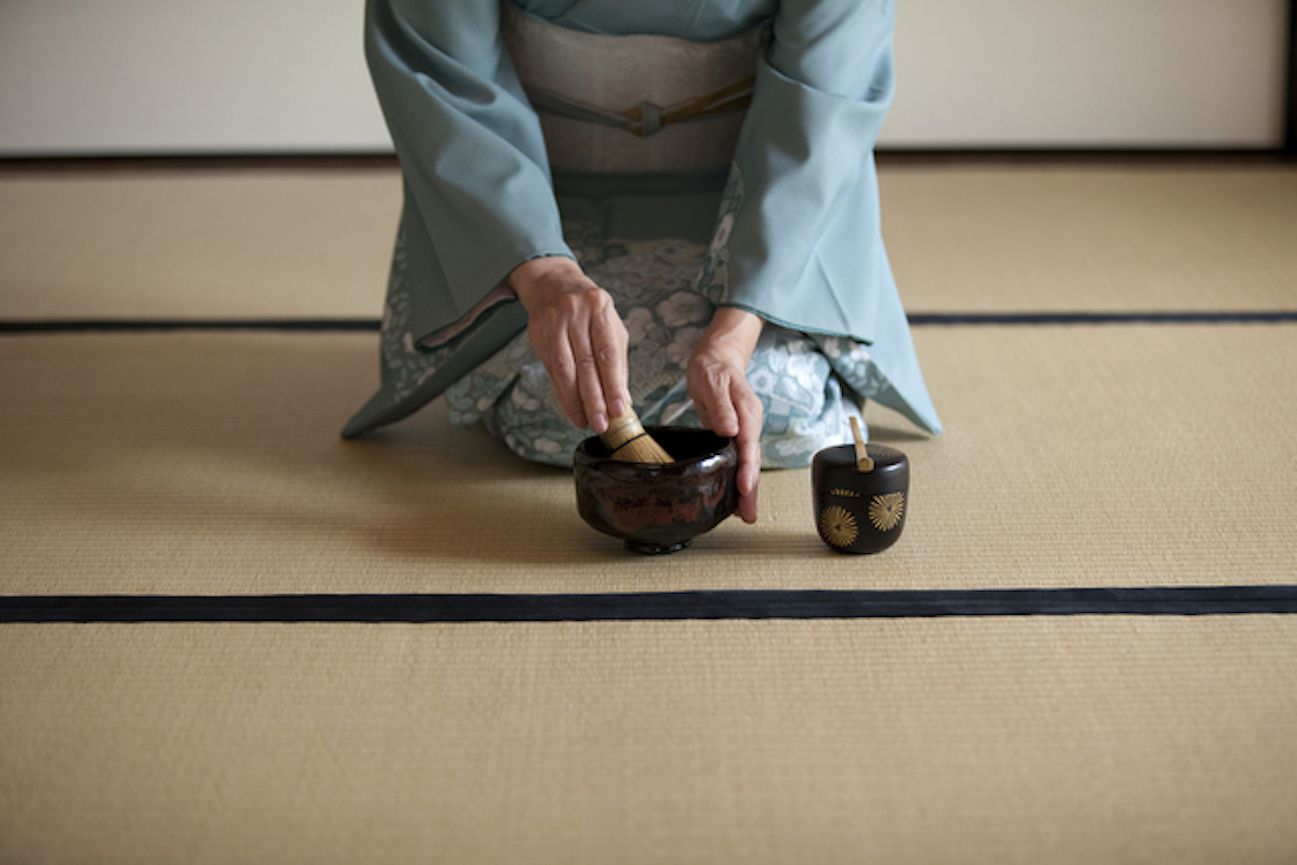
The tea ceremony whose tradition is still passed down today is the art of enjoying tea, in a set way, alongside the spirituality of the master offering the guest hospitality.
The raw ingredient of tea is leaves from the Theaceae family evergreen “Chanoki” (tea plant; Latin name: Camellia sinensis). In fact, green tea, oolong tea and black tea all come from the same tea plant. Oxidative fermentation of the tea plant leaves begins naturally from the time they are picked, the same principle as apples turning brown once they are peeled. Black tea (fermented tea) is produced using the workings of this oxidative fermentation completely, oolong tea (semi-fermented tea) uses it a little, while green tea (unfermented tea) is produced not using it at all. While black tea and oolong tea turn brown in the production process, green tea that is created without fermentation retains the original green color of the tea plant leaves.
Japanese tea is produced through the following process. (1) As soon as they are picked, the tea leaves are steamed using steam. Steaming them while they are fresh stops the workings of oxidative fermentation, and removes rawness while protecting the color of the tea leaves. Depending on the steaming time, the taste, aroma and color changes. (2) The leaves are rolled. Rolling them powerfully, and rolling them into shape, the leaves are dried using various rolling processes. Nowadays, it is common to roll them using a machine, although the technique remains of “hand-rolled tea” rolled by the hands of skilled people. (3) The rolled tea leaves are sufficiently dried, resulting in the raw ingredient, crude tea. (4) The crude tea is traded and passes to tea dealers (tea processors), put through intricate finishing processes such as firing (final drying), sieving and blending, and the first finished tea (Japanese green tea) is complete.
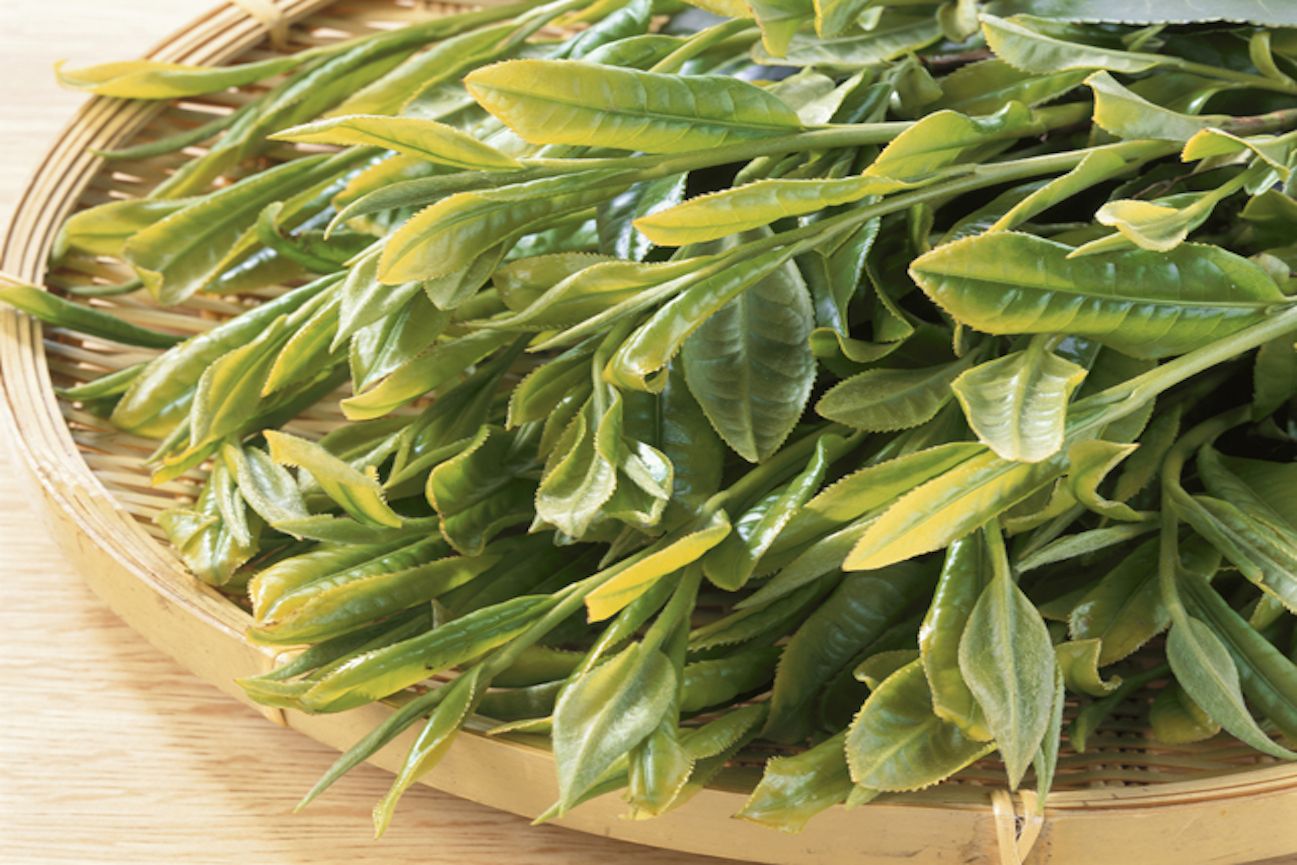
Tea leaves of newly picked tea. Early April to late May is the period suitable for the harvest.
Most of the tea produced in Japan is green tea. However, tea is not just vivid green: depending on the cultivation and production methods of the tea leaves, it transforms itself in many different varieties for drinking throughout the day.
The most popular green tea is “Sencha”. It is a bright green-colored tea with moderate astringency, a gentle aroma and refreshing flavor that is familiar to all. Also, production methods to bring out flavor, by blocking direct sunlight during its cultivation, result in deep-flavored “Gyokuro” and “Kabusecha”, whose names are synonymous with high-quality tea. There are many different varieties, including “Hojicha”, easy to drink with a roasted aroma due to the roasting of the tea leaves at high temperature, and also “Genmaicha”, mixed with roasted grains of rice. In addition, “Matcha”, made from finely ground and powderized tea leaves, is no longer only frothed with a tea whisk to be drunk, but recently has become a classic feature in cakes and sweets.
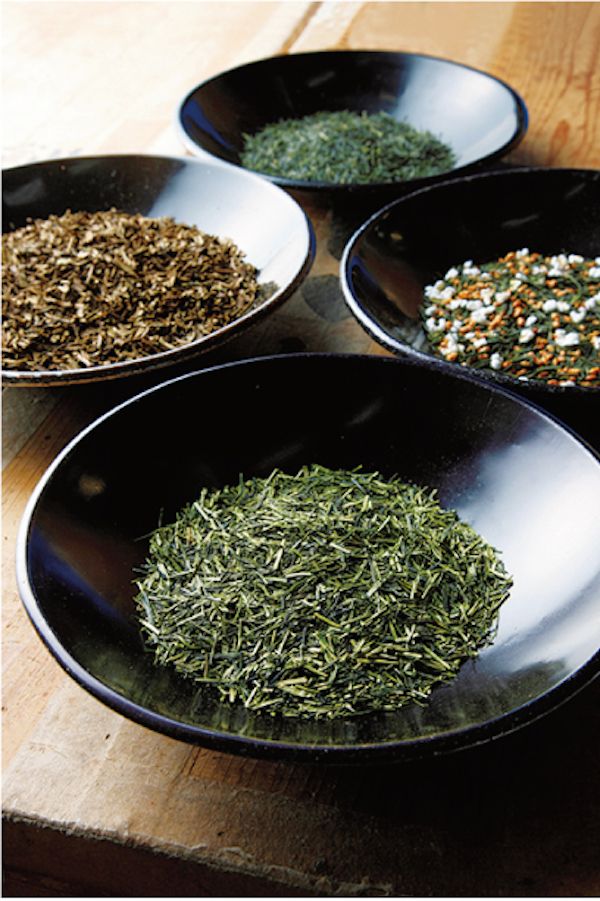
The color and taste changes depending on the cultivation and production methods of the tea leaves. Clockwise from top: Sencha, Genmaicha, Kukicha, Hojicha. Photo is from the Ministry of Agriculture, Forestry and Fisheries PR magazine “aff”, April 2017 issue.
Green tea is sugarless and calorie-free, and is also distinctive in containing a good balance of nutrients beneficial to the body, such as catechins with powerful antioxidative effects and vitamins. Theanine, an element present in Japanese tea, suppresses tension and unease, bringing healing effects leading to a relaxed body and mind. There are also many expected health benefits, such as “tea gargling”, recommended to prevent colds, since the strong bacteriocidal effect of catechins has the power to suppress the invasion and multiplication of viruses in the body.
Due to people’s increased health consciousness and the popularity of Japanese food overseas, in recent years, green tea has achieved a worldwide boom. There has been an increase in people preferring to drink green tea, mainly in the U.S, various European countries and Australia, with “Green Tea” coming to feature alongside coffee and black tea even on cafe menus. It is interesting that “Matcha”, in particular, has drawn attention overseas as a superfood. Matcha stands have popped up on streets, with Matcha lattes, Matcha smoothies, as well as ice creams and desserts using Matcha, proving popular. Matcha, with its intense green color, is loved the world over, transforming itself in abundant variation, including use in sauces to top dishes, dips, etc.
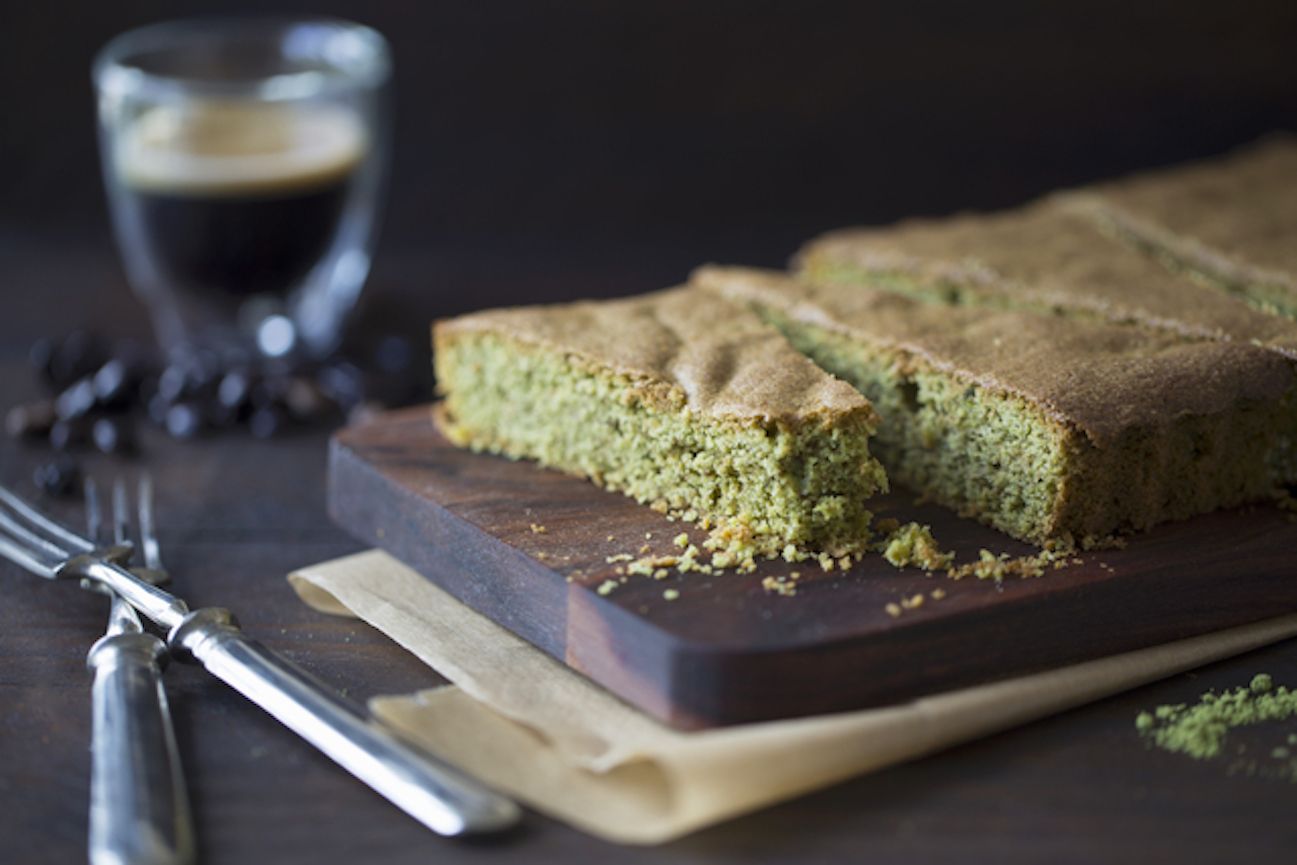
Matcha is used a lot in sweets, and is a popular ingredient among chefs and patissiers overseas, too. The balance between its faint bitterness and sweetness is superb.
[The Tea Ceremony]
Part of the traditional culture of Japan; a ritual, or art, in which Matcha is whisked, and the tea served to the guest, in a set way. Unique Japanese culture giving a sense of the beautiful observation of such things as a spirit of hospitality, and Wabi and Sabi (aesthetics of quiet and subdued refinement). Moreover, it fuses several arts, including the social art of entertaining guests, tearoom arrangement, the individual tea-making tools and Japanese cakes suggesting the season.
References: Japan Tea Central Public Interest Incorporated Association; Japan Tea Export Promotion Council
Photographs supplied by: amanaimages, Ministry of Agriculture, Forestry and Fisheries PR magazine “aff” April 2017 issue
Text: Miki Suka




